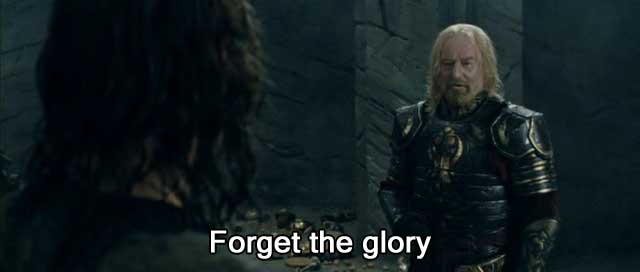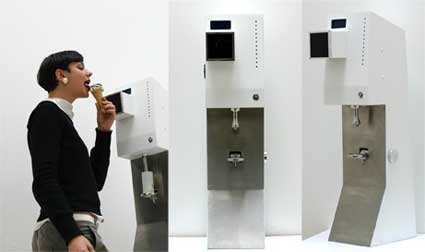
Actual speech:'For Death and Glory'.
The first movie I ever saw with subtitles was Toy Story in 1995. My Christmas present that year was a captioner- a black box about the size of a long Dostoevsky novel. It was relatively simple to operate- you inserted the VHS tape as usual and pressed a button on the front of the captioner and imbedded captions would come up on the screen. It was a double edged sword, however. It had two scart sockets, one for the tv and one for the VHS, plus a plug for the mains. While this sounds easy enough to install, it could take quite some time to get all the plugs in the right places. That wasn't all- the subtitles could be quite erratic, sometimes disappearing for long periods of time, sometimes being warped beyond recognition, sometimes with missing chunks. It was with relief, then, that I welcomed the DVD player early in this millennium. The range of movies I could watch suddenly expanded from a narrow selection of large-budget movies with 'Q' on the back denoting captions to nearly every DVD produced. Not only this, but the subtitles were near perfect and appeared as white on the movie background, rather than the white with black boxes behind it. This made it easier to watch the film without having to pay undue attention to the captions, plus they didn't fill up most of the screen.
Having waved a happy adieu to the captioner, it is with interest that I look forward to the future of captioning- real time captioning of live events. As things stand now, I use notetakers- usually classmates paid by the university- to make sure I don't miss things in class. I want to use technology to make my life easier in this area, though. I think introducing a captioner which can be used in real time will be of great benefit both to the deaf population and for meetings, conferences, lectures, bloggers, etc. In this wired generation that we live in, I could see bloggers or editors attending lectures or interviews and being able to edit the text directly on the screen, with no need for transcription.
The Charles Darwin University has released something that promises this solution: ViaScribe, currently only for university use, but possibly useful eventually for personal use. Here's an excerpt from their press release:
Charles Darwin University has joined an international consortium developing technology that will enable the instant delivery of voice-activated lecture material.
The new voice-activated computer technology allows students to follow their lecturer's material on a screen as it is delivered - an innovation with enormous potential not only for deaf students and students with physical and intellectual disabilities but for the entire student population.
CDU recently signed on with Liberated Learning, a consortium based at St Mary's University in Nova Scotia, Canada that now has links with 16 institutions in eight countries.
A research group based at St Mary's has been developing the voice-activated computer software for the past seven years in partnership with computer giant IBM, which has developed a software program called ViaScribe.
The lecture-captioning system has been adopted in universities across the world, including the University of the Sunshine Coast in Queensland and The Australian National University in Canberra.
Liberated Learning's international manager Keith Bain visited the Casuarina campus of Charles Darwin University to demonstrate the captioning system and hold talks with Support and Equity Services as to the way forward for the new partnership.
Mr Bain says the consortium is committed to working with universities and other partners to further develop the Liberated Learning system and meet the challenges of providing new learning systems for the disabled or disadvantaged.
He adds, however, that Liberated Learning's research and development has proven beneficial to all students.
'We've found that the automatic captioning system also leads to the improvement in lecture delivery by teachers,' said Mr Bain.
He says the aim of the St Mary's University consortium is to create a living laboratory, working from scratch with its partners to build new technology.
'In our partnership with CDU, we want to learn more about how the university wants to use the technology,' he says.
'There are a number of equity factors at CDU to be addressed, such as the high number of students with disabilities or disadvantage, non-English speaking background students, rural and remote students and the under-representation of women in non-traditional fields of study.'
Elizabeth Macdonald, the director of CDU's Support and Equity Services, said: 'We're excited to be part of the consortium, which is about sharing information and being involved in a global project working on the evolution of speech-recognition software.
'We see the potential for wide application of this technology for students at CDU studying both on and off campus.'
I'll be watching this space closely. Exciting!
